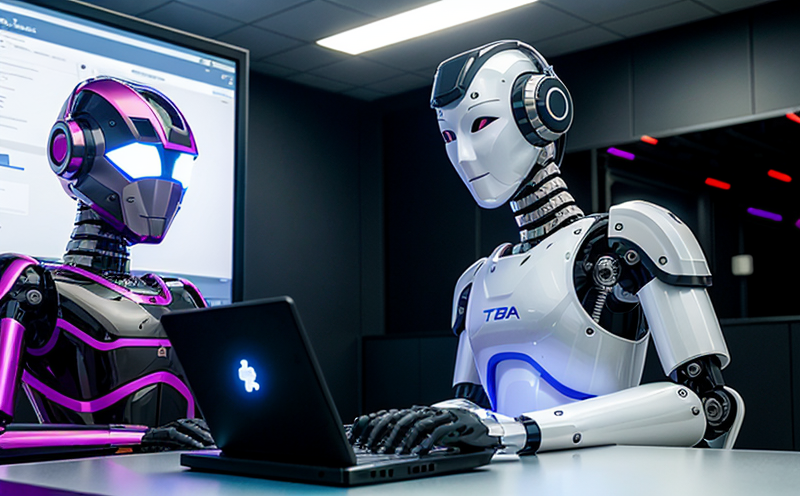UL 2900-2-2 Cybersecurity Testing for Healthcare Robot Systems
The healthcare robotics industry has seen rapid growth in recent years, driven by the need to enhance patient care and operational efficiency. However, with this advancement comes a critical challenge: ensuring that these systems are secure against cyber threats. The UL 2900-2-2 standard provides a framework for assessing cybersecurity risks in industrial automation and control systems, including robotics used in healthcare settings.
UL 2900-2-2 focuses on the security of programmable automation controllers (PACs) within industrial automation and control system networks. In the context of robotic systems employed in healthcare, this standard ensures that critical functions such as patient monitoring, medication dispensing, and robotic-assisted surgeries are not compromised by unauthorized access or malicious attacks.
Testing according to UL 2900-2-2 involves a comprehensive evaluation of various aspects including:
- Authentication mechanisms
- Authorization controls
- Data encryption
- Network segmentation and isolation
- Event logging and monitoring
- Incident response planning
The process begins with a risk assessment to identify potential vulnerabilities. From there, the test team applies a series of simulated attacks using industry-standard techniques to evaluate the system's resilience. The testing ensures that all components—hardware, software, and network—are robust against unauthorized access.
One key aspect is the evaluation of authentication methods used by the system. This includes examining password policies, multi-factor authentication, and biometric systems integrated into healthcare robots. The UL 2900-2-2 standard also mandates that data integrity checks are in place to prevent tampering with patient records or operational commands.
Another critical area is network security. The test assesses the effectiveness of firewalls, intrusion detection/prevention systems, and secure communication protocols used within the robotic system's environment. This ensures that sensitive information remains protected from external threats.
Data integrity testing plays a pivotal role in this process. It involves verifying that data transmitted between different parts of the robot system is accurate and unaltered during transfer. This includes checking for anomalies in command execution, sensor readings, and feedback loops that could indicate tampering or interference.
In summary, UL 2900-2-2 cybersecurity testing ensures that healthcare robots are protected against cyber threats, safeguarding patient safety and operational integrity. By adhering to this standard, manufacturers can demonstrate compliance with international best practices and build trust among regulatory bodies and end-users.
Environmental and Sustainability Contributions
While the primary focus of UL 2900-2-2 cybersecurity testing is on protecting critical systems from cyber threats, it also has broader implications for environmental sustainability. By ensuring that robotic systems are secure against unauthorized access or malicious attacks, these tests help prevent potential disruptions to healthcare operations.
Disruptions in healthcare robotics can lead to increased operational costs and reduced efficiency, which in turn may result in higher energy consumption and resource use. By maintaining system integrity through robust cybersecurity measures, UL 2900-2-2 helps minimize these impacts, contributing positively to overall sustainability efforts.
- Reduced downtime: Ensuring that robotic systems are secure can prevent potential outages caused by cyber attacks or unauthorized access. This reduces the need for frequent maintenance and replacement of equipment, ultimately lowering waste generation.
- Energy efficiency: Secure systems operate more reliably, which can lead to better energy management practices within healthcare facilities. Efficient use of resources directly supports sustainability goals.
Incorporating UL 2900-2-2 into the design and testing phases of robotic systems not only enhances patient safety but also contributes to more sustainable healthcare operations.
Competitive Advantage and Market Impact
Adhering to UL 2900-2-2 cybersecurity standards provides significant competitive advantages in the healthcare robotics market. In an era where patient safety and operational reliability are paramount, compliance with this standard can differentiate a product from its competitors.
Clients seeking assurance that their robotic systems meet rigorous security standards will look for companies that provide UL 2900-2-2 testing as part of their service offerings. This not only enhances brand reputation but also opens doors to new business opportunities within the healthcare robotics sector.
From a compliance officer’s perspective, demonstrating adherence to international standards like UL 2900-2-2 can simplify regulatory processes and reduce the risk of non-compliance fines or sanctions. This can translate into cost savings for the organization in terms of both operational expenses and potential legal fees.
For R&D engineers, ensuring that new models meet these stringent security requirements early in the development process allows them to identify and address vulnerabilities before products reach market maturity. Early integration of cybersecurity measures also facilitates smoother collaboration with regulatory authorities during product approvals.
Use Cases and Application Examples
- Patient Monitoring Robots: These robots are used to monitor patients in intensive care units (ICUs) or long-term care facilities. UL 2900-2-2 testing ensures that the data collected by these robots is accurate and secure, preventing any potential tampering with vital signs.
- Robotic-Assisted Surgery Systems: Such systems require high levels of precision and reliability to perform complex operations safely. Testing according to UL 2900-2-2 ensures that these systems are protected against unauthorized access or data breaches, maintaining the integrity of surgical procedures.
- Nursing Robots: These robots assist nurses in various tasks such as delivering medication and assisting patients with mobility. UL 2900-2-2 testing helps ensure that sensitive patient information is not compromised during transfer between different parts of the robotic system.
- Data Integrity Checks: These checks are essential for verifying that data transmitted between different components of a healthcare robot remains accurate and unaltered. This includes monitoring command execution, sensor readings, and feedback loops to detect any anomalies indicative of tampering or interference.
- Intrusion Detection Systems: These systems play a crucial role in identifying unauthorized access attempts and responding appropriately. By integrating UL 2900-2-2 into the design phase, manufacturers can enhance their ability to protect against cyber threats effectively.





